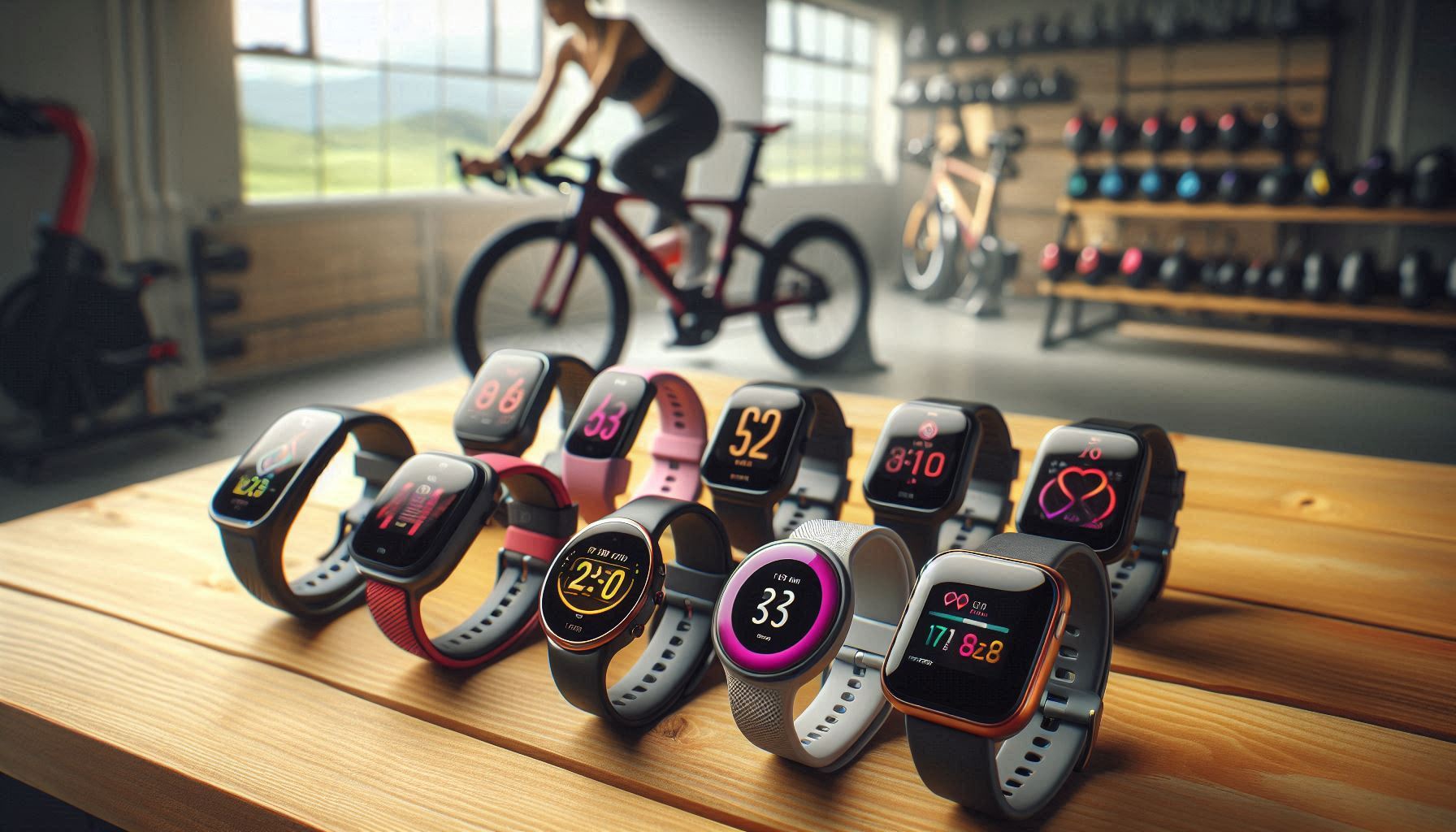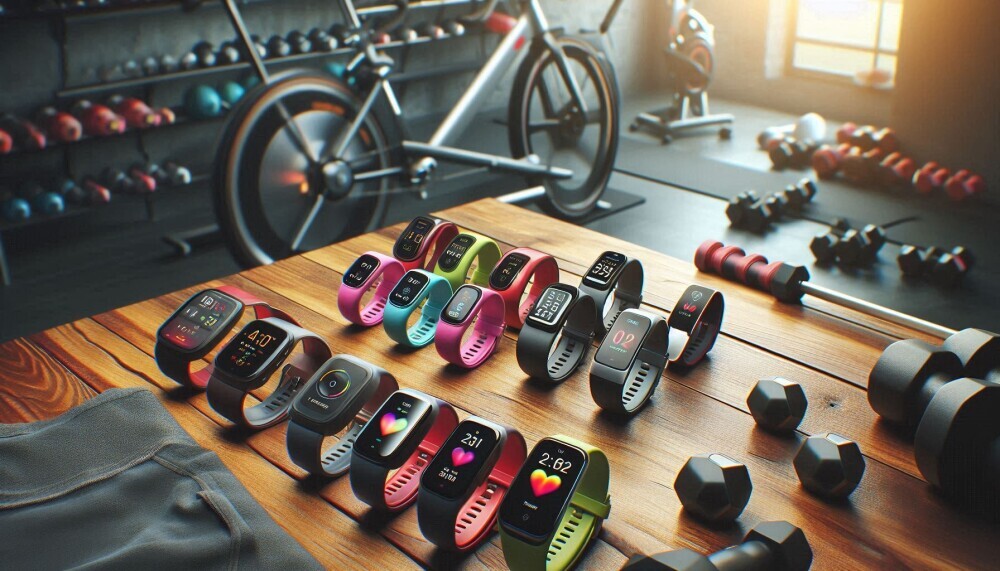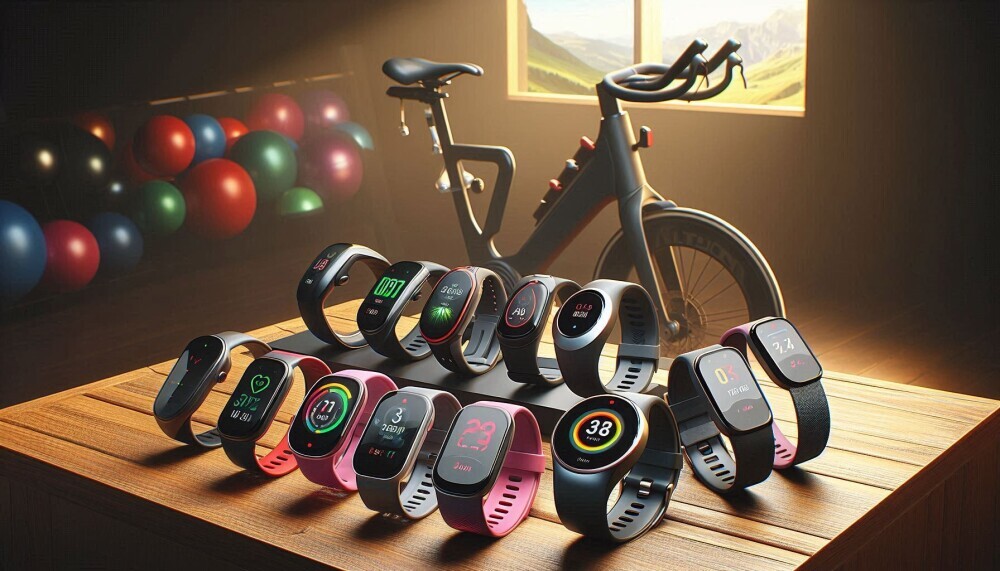A big, warm welcome to Vertevia.com. In this article today, we shall be looking into the world of the Best 5 Heart Rate Monitors For Peloton: Detailed Guide. Wearable health tech devices are advancing at a rapid rate and are covering many aspects of our lives. This advancement is only expected to continue in the coming years. If you are currently using a heart rate monitor device, please let us know in the comments section which one you are using. Right, let’s get cracking! 🙂
Introduction
Whether you’re powering through a high intensity interval ride or cruising through a scenic route, knowing how your body responds is key to maximizing your Peloton workouts. That’s where heart rate monitors come in. These wearable health tech devices give real time insight into your cardiovascular performance, helping you push your limits safely and effectively. For Peloton users in particular, pairing a reliable heart rate monitor with your bike or app can turn your sessions from good to great.
With so many heart rate monitors on the market, choosing one that’s compatible with Peloton and meets your needs can be overwhelming. That’s why we’ve compiled a list of the top 5 heart rate monitors that work seamlessly with Peloton bikes and the Peloton app. These devices were selected for their accuracy, comfort, connectivity, and value. Whether you’re a casual rider or a dedicated athlete, there’s a heart rate monitor here to suit your goals.
Why Peloton Users Should Use a Heart Rate Monitor
Heart rate monitors offer a level of precision that can dramatically enhance your Peloton experience. Peloton workouts are designed around performance zones and without a heart rate monitor, you’re missing a critical metric. By wearing one, you can track which heart rate zone you’re in, personalize your effort, and make data driven adjustments to your workouts. It adds a level of awareness and control that simply isn’t possible through perceived exertion alone.
Heart rate monitors also allow you to track long term cardiovascular improvement, set and reach fitness goals, and avoid overtraining. Many models offer advanced features like calorie tracking, Bluetooth and ANT+ connectivity, and app compatibility for deeper insights. In short, they make your workouts smarter, more efficient, and more effective.
Top 5 Heart Rate Monitors for Peloton: Detailed Guide
1. Polar H10 Heart Rate Sensor
- Price: $89.95
- Features:
-
- Chest strap design for high accuracy
- Bluetooth and ANT+ connectivity
- Internal memory for standalone tracking
- Waterproof and machine washable strap
- Benefits:
-
- Clinically accurate heart rate readings
- Works with Peloton, Strava, Nike Training Club, and more
- Stays in place during intense workouts
- Pros:
-
- Industry leading accuracy
- Dual connectivity for versatile use
- Long battery life (up to 400 hours)
- Cons:
-
- Not ideal for users who dislike chest straps
- Slightly higher price point
2. Wahoo TICKR X (2nd Gen)
- Price: $79.99
- Features:
-
- Chest strap monitor with motion analytics
- Built in memory for offline workouts
- Dual Bluetooth and ANT+ support
- Measures cadence and calorie burn
- Benefits:
-
- Tracks more than just heart rate
- Seamless Peloton integration
- Comfortable, lightweight strap
- Pros:
-
- Motion and cadence tracking
- Affordable for its feature set
- Strong app ecosystem
- Cons:
-
- Chest strap may take time to get used to
- App interface could be more intuitive
3. Scosche Rhythm+ 2.0 Armband HR Monitor
- Price: $89.99
- Features:
-
- Optical sensor worn on the forearm
- Bluetooth Smart and ANT+ connectivity
- IP68 waterproof rating
- Up to 24 hours of battery life
- Benefits:
-
- Great for those who dislike chest straps
- Lightweight and comfortable for long rides
- Highly accurate optical sensor
- Pros:
-
- Strap free design
- Strong compatibility with Peloton and fitness apps
- Durable and waterproof
- Cons:
-
- Slightly less accurate than chest straps at very high intensity
- Device Needs regular charging
4. Garmin HRM-Dual
- Price: $69.99
- Features:
-
- Chest strap with soft, adjustable design
- Bluetooth and ANT+ dual connectivity
- Up to 3.5 years battery life (based on 1 hour/day usage)
- Benefits:
-
- Extremely long battery life
- Reliable, no fuss heart rate monitoring
- Compatible with a wide range of fitness equipment
- Pros:
-
- Budget friendly
- High reliability and comfort
- Works flawlessly with Peloton
- Cons:
-
- No internal memory
- Limited advanced features
5. WHOOP 4.0 Strap
- Price: $30/month subscription (device included)
- Features:
-
- Wrist worn optical heart rate sensor
- 24/7 monitoring including HRV, recovery, and sleep
- Bluetooth Low Energy (BLE) compatibility
- No screen app based data interface
- Benefits:
-
- Deep analytics for overall health and performance
- Sleek, screen free design
- Auto detects workouts
- Pros:
-
- All in one health tracker
- Excellent sleep and recovery insights
- No charging cables (uses battery packs)
- Cons:
-
- Requires ongoing subscription
- Not the most real time accurate for high intensity workouts
Frequently Asked Questions (FAQs)
1. Are all heart rate monitors compatible with Peloton? Peloton bikes and the app support Bluetooth and ANT+ connectivity, so any monitor with these features should work. Always check product specifications for compatibility.
2. Is a chest strap more accurate than a wrist or arm monitor? Yes. Chest straps like the Polar H10 and Wahoo TICKR X use ECG based technology, which is typically more accurate than optical sensors.
3. Can I use one monitor for both Peloton and outdoor workouts? Absolutely. Most heart rate monitors listed here offer multi platform support and can sync with fitness apps and watches.
4. What heart rate zones does Peloton use? Peloton uses five zones based on your maximum heart rate. These zones help guide intensity and track progress.
5. Do I need a heart rate monitor if I’m just a casual rider? While it’s not essential, a heart rate monitor can still help casual users monitor health metrics, avoid overtraining, and set realistic goals.
6. Will my Peloton bike automatically detect my heart rate monitor? Once your monitor is turned on and within range, your Peloton bike should detect it under the “Heart Rate Monitor” pairing option.
How to Get the Most From Your Heart Rate Monitor
- Pair It Correctly: Make sure your heart rate monitor is fully charged and within Bluetooth range of your Peloton bike or app. Go into your settings and pair it before starting your ride.
- Wear It Properly: For chest straps, place them snugly below your chest muscles. For armbands and wrist devices, follow manufacturer instructions for accurate placement.
- Use Heart Rate Zones: Familiarize yourself with your heart rate zones. This helps you understand how hard you’re working and tailor your training to specific goals. Whether that’s fat burning, endurance, or peak performance.
- Sync With Apps: Use compatible apps to view your post workout stats. Apps like Strava, WHOOP, or Polar Flow offer deeper insights and tracking.
- Keep It Clean: Clean straps and sensors regularly to maintain accuracy and comfort. Replace batteries as needed.
- Analyse Trends: Review your data weekly to track progress, adjust training, and stay motivated. You will reap your rewards for your dedication!
Conclusion
A heart rate monitor is more than just a gadget. It’s a performance enhancing tool that can help Peloton users maximize every workout. With real time feedback and long term insights, these devices allow you to ride smarter and train with purpose. Whether you’re chasing a PR, improving cardiovascular health, or just looking to stay active, tracking your heart rate can keep you informed and inspired.
From ultra accurate chest straps like the Polar H10 to the all around lifestyle tracking of the WHOOP 4.0, there’s a heart rate monitor to match every type of rider. By choosing one of the best heart rate monitors for Peloton, you’re investing in smarter training, safer exercise, and a healthier you.
Our Thanks!
We would like to offer our sincere thanks to you for reading through this article on the Best 5 Heart Rate Monitors For Peloton: Detailed Guide. Also, we hope that you have found it helpful in your search for a suitable heart rate monitor. If you would like some more information on wearable heart rate monitors, take a look at our blog! You might like reading one of our related articles which is titled Best 5 Wearable Heart Rate Monitors.
Please let us know in the comments which wearable heart rate monitor device you are currently using or plan to buy in the future!
**Here is a bit of transparency. Our website www.vertevia.com does contain affiliate links and Amazon links. So, if you did make a purchase through the website, we may receive a small commission. This is at no extra cost to you whatsoever. It’s just a way for you to support us as we continue to bring you top quality content**
All the best!
Eamon





